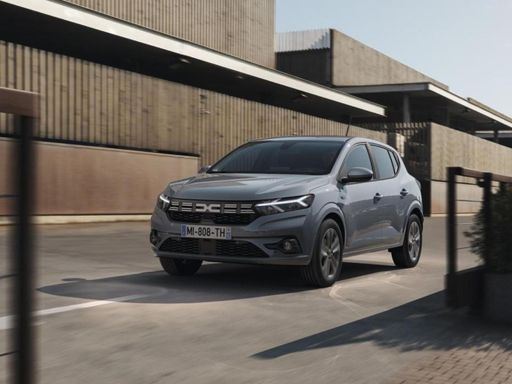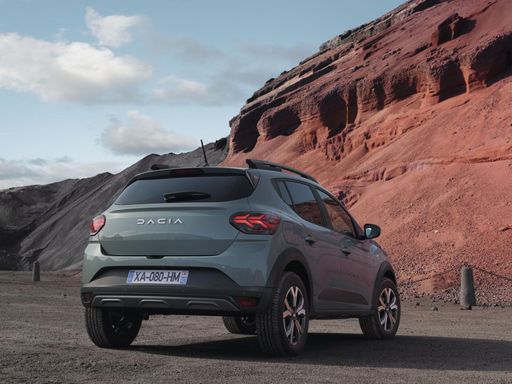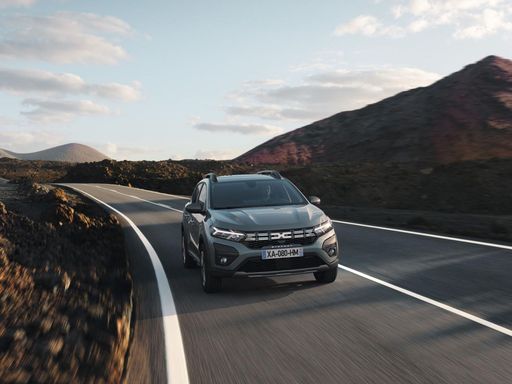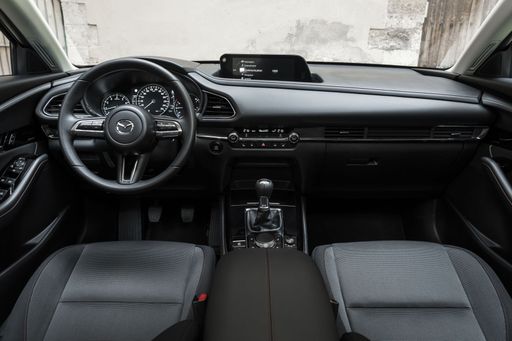Dacia Sandero vs Mazda MX-30 – Differences & prices compared
Both models have their strengths – but which one suits you more?
Compare performance, efficiency, price and space directly: Dacia Sandero or Mazda MX-30?
Costs and Efficiency:
Looking at overall running costs, both models reveal some interesting differences in everyday economy.
Dacia Sandero has a convincingly advantage in terms of price – it starts at 10700 £, while the Mazda MX-30 costs 30800 £. That’s a price difference of around 20143 £.
Engine and Performance:
Power, torque and acceleration say a lot about how a car feels on the road. This is where you see which model delivers more driving dynamics.
When it comes to engine power, the Mazda MX-30 has a distinct edge – offering 170 HP compared to 110 HP. That’s roughly 60 HP more horsepower.
In acceleration from 0 to 100 km/h, the Mazda MX-30 is slight quicker – completing the sprint in 9.10 s, while the Dacia Sandero takes 10 s. That’s about 0.90 s faster.
In terms of top speed, the Dacia Sandero performs distinct better – reaching 183 km/h, while the Mazda MX-30 tops out at 140 km/h. The difference is around 43 km/h.
Space and Everyday Use:
Beyond pure performance, interior space and usability matter most in daily life. This is where you see which car is more practical and versatile.
Both vehicles offer seating for 5 people.
In curb weight, Dacia Sandero is clearly lighter – 1089 kg compared to 1849 kg. The difference is around 760 kg.
In terms of boot space, the Mazda MX-30 offers slight more room – 350 L compared to 328 L. That’s a difference of about 22 L.
In maximum load capacity, the Mazda MX-30 performs barely noticeable better – up to 1155 L, which is about 47 L more than the Dacia Sandero.
When it comes to payload, Dacia Sandero barely noticeable takes the win – 436 kg compared to 402 kg. That’s a difference of about 34 kg.
Who comes out on top?
Overall, the Mazda MX-30 shows itself to be is largely superior and secures the title of DriveDuel Champion.
It convinces with the more balanced overall package and proves to be the more versatile choice for everyday use.
 @ Mazda Motor Corporation
@ Mazda Motor Corporation
Mazda MX-30
Dacia Sandero
The Dacia Sandero is the everyman's hatchback — unpretentious, practical and brilliantly affordable, with sensible space and straightforward charm where it matters most. It won't wow in the premium lane, but for buyers who want honest, dependable transport without showroom theatrics, the Sandero is a clever, no‑nonsense pick that keeps running costs low and grin levels high.
details @ Dacia / Renault Group Media
@ Dacia / Renault Group Media
 @ Dacia / Renault Group Media
@ Dacia / Renault Group Media
 @ Dacia / Renault Group Media
@ Dacia / Renault Group Media
Mazda MX-30
The Mazda MX-30 is a compact crossover that combines unique design with an environmentally conscious approach. Its distinct exterior features a coupe-like silhouette and freestyle doors that offer practicality and style. Inside, the cabin boasts sustainable materials, creating a harmonious blend of modern aesthetics and eco-friendly innovation.
details @ Mazda Motor Corporation
@ Mazda Motor Corporation
 @ Mazda Motor Corporation
@ Mazda Motor Corporation
 @ Mazda Motor Corporation
@ Mazda Motor Corporation
 @ Mazda Motor Corporation
@ Mazda Motor Corporation
 @ Dacia / Renault Group Media
@ Dacia / Renault Group Media
|
 @ Mazda Motor Corporation
@ Mazda Motor Corporation
|
|
|
|
Costs and Consumption |
|
|---|---|
|
Price
10700 - 16700 £
|
Price
30800 - 37100 £
|
|
Consumption L/100km
5.3 - 7.1 L
|
Consumption L/100km
-
|
|
Consumption kWh/100km
-
|
Consumption kWh/100km
18.30 kWh
|
|
Electric Range
-
|
Electric Range
85 km
|
|
Battery Capacity
-
|
Battery Capacity
-
|
|
co2
105 - 140 g/km
|
co2
22 g/km
|
|
Fuel tank capacity
32 - 50 L
|
Fuel tank capacity
-
|
Dimensions and Body |
|
|---|---|
|
Body Type
Hatchback
|
Body Type
SUV
|
|
Seats
5
|
Seats
5
|
|
Doors
5
|
Doors
5
|
|
Curb weight
1089 - 1209 kg
|
Curb weight
1849 kg
|
|
Trunk capacity
328 L
|
Trunk capacity
332 - 350 L
|
|
Length
4088 - 4099 mm
|
Length
4395 mm
|
|
Width
1848 mm
|
Width
1848 mm
|
|
Height
1499 - 1535 mm
|
Height
1555 mm
|
|
Max trunk capacity
1108 L
|
Max trunk capacity
1137 - 1155 L
|
|
Payload
404 - 436 kg
|
Payload
402 kg
|
Engine and Performance |
|
|---|---|
|
Engine Type
Petrol, LPG
|
Engine Type
Plugin Hybrid
|
|
Transmission
Manuel, Automatic
|
Transmission
Automatic
|
|
Transmission Detail
Manual Gearbox, CVT
|
Transmission Detail
Reduction Gearbox
|
|
Drive Type
Front-Wheel Drive
|
Drive Type
Front-Wheel Drive
|
|
Power HP
67 - 110 HP
|
Power HP
170 HP
|
|
Acceleration 0-100km/h
10 - 16.7 s
|
Acceleration 0-100km/h
9.10 s
|
|
Max Speed
158 - 183 km/h
|
Max Speed
140 km/h
|
|
Torque
95 - 200 Nm
|
Torque
-
|
|
Number of Cylinders
3
|
Number of Cylinders
-
|
|
Power kW
49 - 81 kW
|
Power kW
125 kW
|
|
Engine capacity
999 cm3
|
Engine capacity
830 cm3
|
General |
|
|---|---|
|
Model Year
2024 - 2025
|
Model Year
2025
|
|
CO2 Efficiency Class
D, C, E
|
CO2 Efficiency Class
B
|
|
Brand
Dacia
|
Brand
Mazda
|
What drive types are available for the Dacia Sandero?
The Dacia Sandero is available as Front-Wheel Drive.
The prices and data displayed are estimates based on German list prices and may vary by country. This information is not legally binding.
